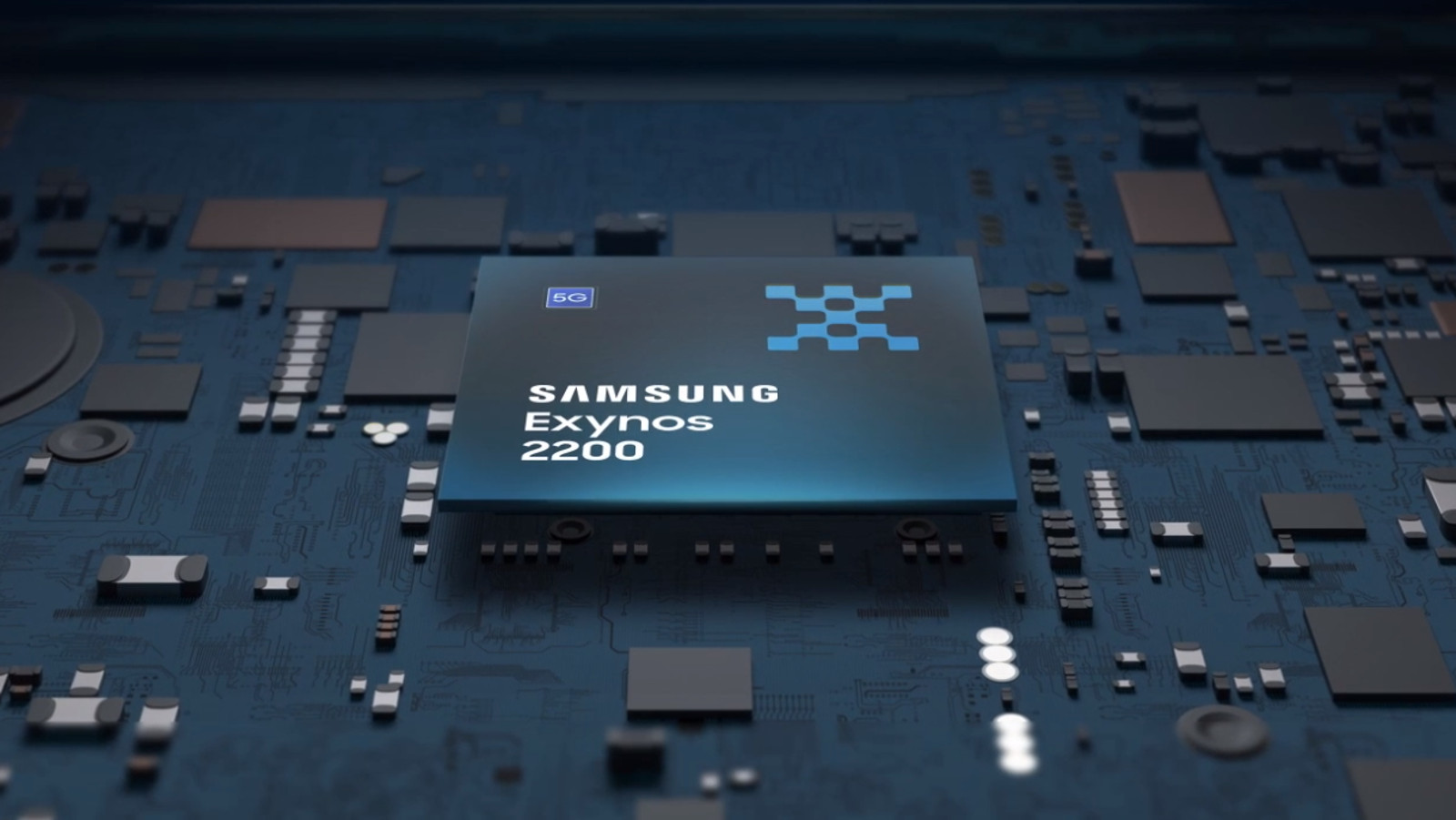What to know about this AMD-powered chipset
Samsung revealed a partnership with AMD back in 2019 which would see the graphics company build a GPU for Exynos smartphone processors. It’s been a wait since then, but now Samsung has finally announced the first product in this partnership, the Exynos 2200.
The Exynos 2200 brings a Samsung 4nm design as well as the new Armv9 CPU cores. The core layout is similar to Mediatek and Qualcomm’s latest SoCs, featuring a single Cortex-X2 for heavy lifting, three Cortex-A710 cores for medium tasks, and four Cortex-A510 little cores. Samsung didn’t disclose clock speeds or cache details here.
That AMD GPU
The star of the show here is indeed the so-called Xclipse 920 GPU though, powered by AMD’s RDNA2 graphics cores. There’s no official word on clock speed or the number of cores in use here, but it supports hardware-based ray tracing technology and variable rate shading. Samsung added that the GPU also supports the company’s Amigo tech for governing and optimizing power usage across the entire processor.
The RDNA2 cores are fundamentally the same technology seen in current-generation consoles like the PS5 and Xbox Series consoles, albeit with a reduced number of cores, reduced clock speed, and more compromises. So don’t expect similar graphics here, but we are keen to see what’s possible with this tech and proper ray tracing.
“Samsung’s Xclipse GPU is the first result of multiple planned generations of AMD RDNA graphics in Exynos SoCs,” AMD executive David Wang was quoted as saying by Samsung. So this is just the first effort and we’ll see more Exynos chipsets using this technology in the years ahead.
| Samsung Exynos 2200 | |
|---|---|
|
CPU Config |
1x Cortex-X2 |
|
GPU |
Xclipse 920 |
|
RAM/storage |
LPDDR5 |
|
AI / DSP |
Dual-core NPU |
|
Camera |
200MP single |
|
Modem |
4G LTE |
|
Process |
4nm |
Looking at the rest of the chipset, the NPU has also seen an upgrade. In fact, Samsung claims double the performance compared to the Exynos 2100 machine learning silicon and higher precision FP16 support. Interestingly, the NPU is a dual-core design versus the tri-core setup seen on the Exynos 2100.
Shifting to the modem, the Korean brand says the new modem supports 3GPP release 16 capabilities. Furthermore, you can expect downlink speeds of up to 5.1Gbps and 7.35Gbps via sub-6GHz and mmWave respectively, or 10Gbps speeds when using the EN-DC mode which combines 4G and 5G.
Exynos 2200: A multimedia powerhouse?
The new chipset seems to be an evolution rather than a revolution in the camera field, supporting a 200MP single camera, a 108MP single camera at 30fps, or 64MP+36MP dual cameras at 30fps. Otherwise, the processor also supports up to seven cameras connected at once and concurrent processing from four of them.
Video capabilities aren’t too shabby either, with the chipset supporting 4K HDR, 4K/120fps, and 8K/30fps recording. Unlike the Snapdragon 8 Gen 1 there’s no 8K HDR recording capability here, but the Samsung chipset also offers AV1 decoding which Qualcomm’s SoC lacks.
What do you think of the Exynos 2200 on paper?
0 votes
Other notable details include 4K display resolution at 120Hz, QHD+ resolution at 144Hz, HDR10+ display support, LPDDR5 RAM, and UFS 3.1 storage.
The Samsung Exynos 2200 is in mass production right now, and we’re expecting to find it in some Galaxy S22 series phones. Samsung’s new flagship phones are expected to launch next month, so we’ll likely see what the new chipset is capable of around then.
What do you think of the Exynos 2200 on paper? Let us know via the poll above.
For all the latest Technology News Click Here
For the latest news and updates, follow us on Google News.

